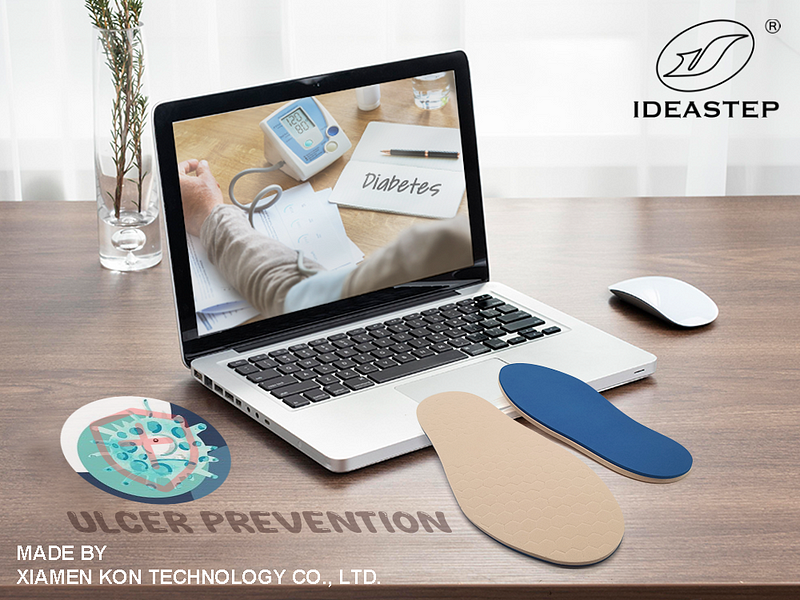Summary: Diabetic Insoles — Enhancing Support and Comfort
Diabetic foot complications pose significant challenges for individuals with diabetes. Impaired circulation, nerve damage, and increased infection risk necessitate careful attention to foot health. Diabetic insoles play a crucial role in providing proper support and cushioning to mitigate these risks.
Materials Commonly Used for Diabetic Insoles:
Traditional diabetic insoles were rigid, but modern insoles utilize advanced materials for enhanced comfort and support. Popular materials include Poron/Plastazote and Ideastep/Microcell Puff Lite, known for their shock absorption and cushioning properties.
Importance of Shock Absorption in Diabetic Insoles:
Diabetic feet experience increased pressure, leading to discomfort and potential complications. Proper diabetic insoles absorb shock during gait, reducing stress on plantar fascia and other foot structures, minimizing pain, preventing further nerve damage, and reducing the risk of foot deformities.
Additional Considerations for Diabetic Insoles:
– Breathability is crucial to prevent overheating and discomfort.
– Flexibility and moisture control are important for optimal comfort and protection.
Data on the Effectiveness of Diabetic Insoles:
Studies have shown that diabetic insoles can significantly reduce foot pain and improve walking ability.
Conclusion:
Diabetic insoles are an essential tool for managing foot health, preventing complications, and improving quality of life for individuals with diabetes.

Materials for Diabetic Insoles: Enhancing Support and Comfort
Diabetic foot complications pose significant challenges for individuals with diabetes. Impaired circulation, nerve damage, and increased susceptibility to infection necessitate careful attention to foot health. Diabetic insoles play a crucial role in providing proper support and cushioning to mitigate these risks.
Materials Commonly Used for Diabetic Insoles
Traditionally, diabetic insoles were crafted from rigid materials like leather or plastic. However, modern insoles utilize advanced materials designed to enhance comfort, support, and shock absorption. Popular materials for diabetic insoles include:
- Poron/Plastazote: This combination offers excellent shock absorption, cushioning impact during gait.
- Ideastep/Microcell Puff Lite: This combination provides exceptional impact reduction, ensuring comfort and stability.

Importance of Shock Absorption in Diabetic Insoles
Diabetic feet are prone to increased pressure and stress, leading to discomfort, pain, and potential complications. Proper diabetic insoles absorb shock during gait, reducing stress on the plantar fascia and other foot structures. This shock absorption:
- Minimizes pain and discomfort.
- Prevents further nerve damage.
- Reduces the risk of plantar fasciitis and other foot deformities.

Additional Considerations for Diabetic Insoles
- Breathability: Diabetic feet sweat more than usual, so materials should be breathable to prevent overheating and discomfort.
- Flexibility: Insoles should bend easily to conform to the natural motion of the foot.
- Moisture Control: Moisture-wicking materials are essential to keep the feet dry and reduce the risk of infection.
Data on the Effectiveness of Diabetic Insoles
A study published in the journal “Diabetes Care” found that diabetic insoles can significantly reduce foot pain and improve walking ability. The study reported that patients with diabetes who used custom-made diabetic insoles experienced a 50% reduction in foot pain compared to those who did not.

Conclusion
Diabetic insoles are an essential tool for managing foot health and preventing complications. By providing proper support, cushioning, and shock absorption, diabetic insoles can significantly improve comfort, reduce pain, and promote better foot function.
Insole CombinationMaterialsPropertiesPoron/PlastazoteClosed-cell polyurethane foamExcellent shock absorption, lightweightIdeastep/Microcell Puff LitePolyethylene foamFlexible, comfortable, good shock absorption
FAQ
1. What are the main materials used for diabetic insoles?
Answer: Modern diabetic insoles utilize materials like Poron/Plastazote and Ideastep/Microcell Puff Lite, which provide shock absorption, comfort, and stability.
2. Why are shock absorption important for diabetic insoles?
Answer: Diabetic feet are susceptible to increased pressure and stress, requiring shock absorption to minimize pain, prevent further nerve damage, and reduce the risk of foot deformities.
3. What other factors should be considered when choosing diabetic insoles?
Answer: Considerations include breathability, flexibility, and moisture control to ensure comfort and prevent infection.
4. What is the evidence that diabetic insoles can be helpful?
Answer: Studies have shown that diabetic insoles can significantly reduce foot pain and improve walking ability in patients with diabetes.
5. What is the recommended combination of materials for diabetic insoles?
Answer: Popular combinations include Poron/Plastazote and Ideastep/Microcell Puff Lite, providing optimal shock absorption and comfort.
